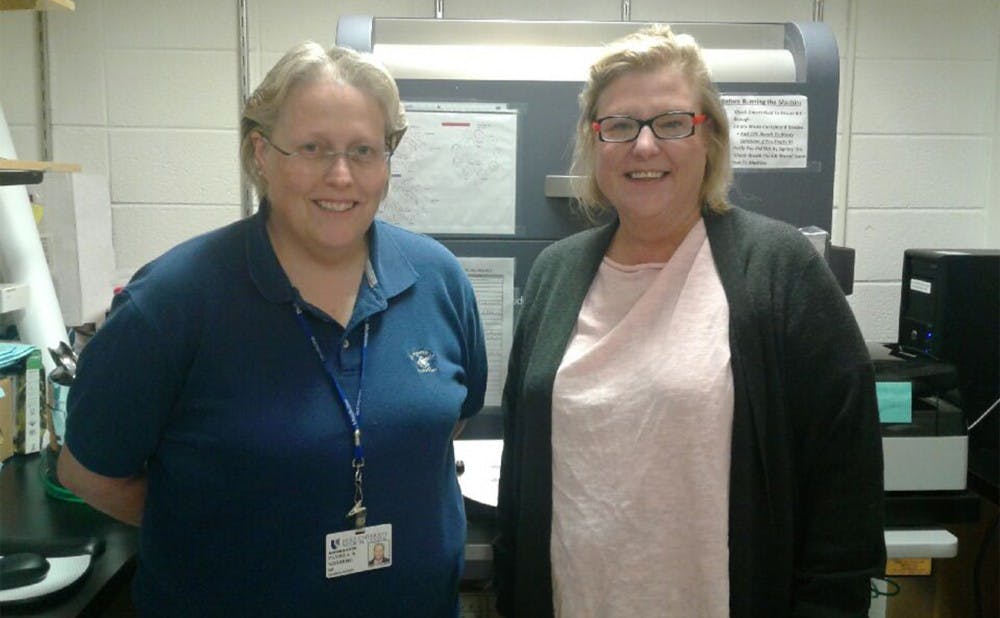The median survival time for glioblastoma—the most aggressive form of brain cancer—is a mere 15 months. A new Duke study, however, could help give glioblastoma patients more time than that.
The team behind the research found that immunotherapy—a cancer treatment that harnesses the patient’s own immune system to fight the tumor—using a dendritic cell vaccine in combination with immune system T cells extended the median patient survival time to 27 months for the cohort studied. Collectively, the team found that this two-pronged therapy could add close to an entire extra year of life for patients who receive it compared to those that do not.
“Glioblastoma is a terrible disease and still considered nearly 100 percent fatal, and immunotherapy offers some hope to these patients to extend life,” said Elizabeth Reap, assistant professor in neurosurgery and lead author of the study.
Reap and her team's findings are the latest in a series of trials carried out by the lab of John Sampson, Robert H. M.D. and Gloria Wilkins professor of neurosurgery. His team has been working on similar clinical trials testing dendritic cell vaccines on glioblastoma patients since 2010.
How does the dendritic cell vaccine work?
Reap explained that the role of dendritic cells in the immune system is to present antigens—molecules that induce an immune response—to T cells, which are a type of white blood cell that can be triggered to protect the body from infection. She added that the dendritic cell vaccine she and her team tested does not boost the immune system like a flu vaccine, but instead stimulates the immune system to fight off the existing disease.
“Anything we can get into the patients as soon as possible to increase the effectiveness of the most potent immune cells is going to be really important for us,” she said.
Because nearly all patients with glioblastoma tumors also carry the cytomegalovirus, Reap said she and her team designed and trained T cells to go after the protein pp65, which is associated with the virus. They found that the T cells targeting pp65 could subsequently speed up the body's immune system in finding and killing the tumor.
“The idea is the patient has a few [virus] pp65-specific [T cells] before, but we expand them by culturing them with the pp65 dendritic cells,” Reap said.
Another focus of the study was to create polyfunctional T cells—T cells which are highly versatile by releasing a variety of signaling molecules. Reap explained that, generally, the more functions a T cell can activate, the better the disease outcome.
“After expansion, we were able to not only increase the number of [killer T cells known as CD8s], but also the number of cells that had the ability to secrete multiple cytokines, making the cells better at their job to kill tumor,” she said.
The group that received the dendritic vaccine plus the adoptive T cells showed a greater increase in polyfunctional T cell counts than the group that received only adoptive T cells, according to the paper. This revealed a striking increase in killer T cells after immunotherapy.
What conclusions can we draw?
Reap explained that their findings collectively demonstrated that “the patients that received CMV pp65-antigen specific dendritic cell vaccines in addition to adoptive T cells showed more polyfunctional T cells," which are correlated with better survival in patients with glioblastoma.
This particular study was a pilot—the first phase of three phases—in which fifteen patients were followed from diagnosis to death. Reap noted that because of their chosen small sample size, no concrete conclusions can be drawn yet, but the findings are nevertheless promising.
Looking to the future, Reap mentioned that later trials could involve targeting proteins other than pp55 and examining how such combinations might improve outcomes.
“If you can help these people survive for even a few more months, this is a good thing,” said Pamela Norberg, a study co-author and research analyst.
Get The Chronicle straight to your inbox
Signup for our weekly newsletter. Cancel at any time.

